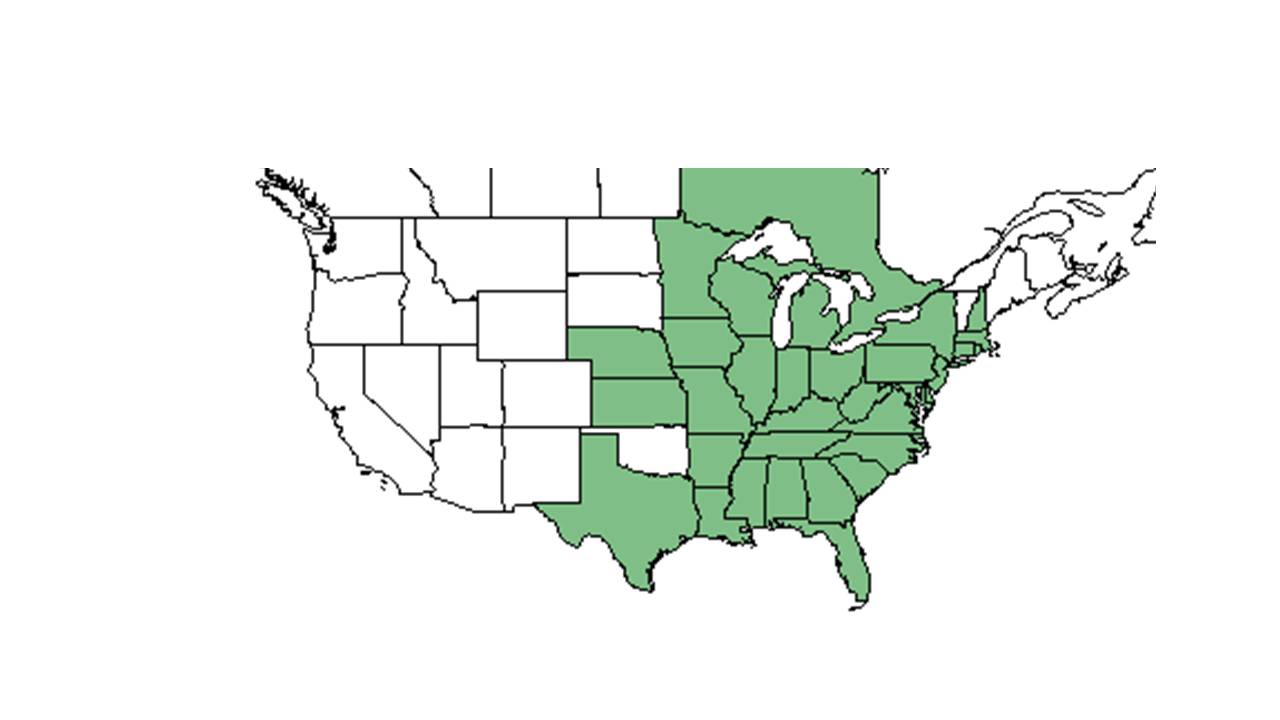Difference between revisions of "Agalinis purpurea"
KatieMccoy (talk | contribs) |
KatieMccoy (talk | contribs) |
||
| Line 15: | Line 15: | ||
| binomial_authority = (L.) Pennell | | binomial_authority = (L.) Pennell | ||
| range_map = AGAL_PURP_dist.jpg | | range_map = AGAL_PURP_dist.jpg | ||
| − | | range_map_caption = Natural range of ''Agalinis purpurea'' from USDA NRCS [http://www.plants.usda.gov Plants Database]. | + | | range_map_caption = Natural range of ''Agalinis purpurea'' from USDA NRCS [http://www.plants.usda.gov/core/profile Plants Database]. |
}} | }} | ||
Revision as of 15:11, 15 October 2015
| Agalinis purpurea | |
|---|---|
Error creating thumbnail: Unable to save thumbnail to destination
| |
| Scientific classification | |
| Kingdom: | Plantae |
| Division: | Magnoliophyta - Flowering plants |
| Class: | Magnoliopsida - Dicotyledons |
| Order: | Lamiales |
| Family: | Orobanchaceae |
| Genus: | Agalinis |
| Species: | A. purpurea |
| Binomial name | |
| Agalinis purpurea (L.) Pennell | |

| |
| Natural range of Agalinis purpurea from USDA NRCS Plants Database. | |
Common names: Smooth Gerardia; Purple False Foxglove
Contents
Taxonomic notes
Description
It is an annual (Hall 1993).
Distribution
It is frequent in all of Florida. Found from west to Texas, north to Massachusetts (Hall 1993).
Ecology
Habitat
Agalinis purpurea is found in low, wet, sandy or peaty areas such as stream sides and moist depressions within frequently burned pine communities; seepage slopes, fresh water marshes, cypress flats, and hardwood swamps. It also occurs on shallow limerock soils of slash pine rocklands in South Florida, as well as in high, well drained sandhills (Entisols). It occurs primarily in high light conditions, although it can also occur in relatively shaded habitats such as cypress and hardwood swamps (FSU Herbarium). It is tolerant of high densities of grass and sedges such as in pitcher plant bogs and marshes. The soil tolerance is wide, including peat (Histosols), loams (Ultisols), and deep sands (Entisols and Spodosols). It also can be found alongside roads, bordering flatwoods, powerline corridors, and other disturbed areas (FSU Herbarium). This species does well in high light intensity areas and is distributed throughout the habitat (FSU Herbarium).
Phenology
It flowers from April to November, primarily in October, and fruits from May to November (FSU Herbarium).
Seed dispersal
Seed bank and germination
Agalinis purpurea was absent from the seed bank of ephemeral ponds in Hyannis though they were present as adults. The composition of the seed bank often predicts the future composition of plants after the disturbance of water level drawdown (Neill et al 2009).
Fire ecology
Communities are near fire-dependent communities such as longleaf pine/wiregrass communities (FSU Herbarium).
Pollination
Use by animals
Diseases and parasites
Conservation and Management
Cultivation and restoration
Photo Gallery
References and notes
Florida State University Robert K. Godfrey Herbarium database. URL: http://herbarium.bio.fsu.edu. Last accessed: June 2014. Collectors: Loran C. Anderson, Robert K. Godfrey, John Morrill, J. M. Canne, Grady W. Reinert, O. Lakela, P. Genelle, G. Fleming, A. H. Curtiss, Duval, John C. Semple, L. Brouillet, Wilson Baker, Jane Brockmann, and J. Ferborgh. States and Counties: Florida: Franklin, Wakulla, Leon , Taylor, Bay, Jefferson, Nassau, Collier, Citrus, Putnam, Monroe, Dade, and Jackson. Georgia: Thomas.
Hall, David W. Illustrated Plants of Florida and the Coastal Plain: based on the collections of Leland and Lucy Baltzell. 1993. A Maupin House Book. Gainesville. 342. Print.
Neill, C., M. O. Bezerra, et al. (2009). "Distribution, species composition and management implications of seed banks in southern New England coastal plain ponds." Biological Conservation 142: 1350-1361.